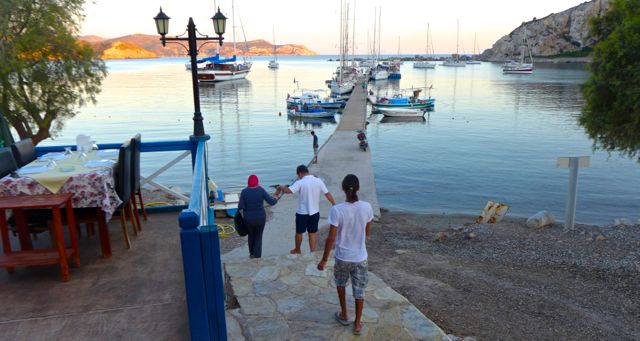












One of the loveliest sites I have come across, Knidos straddles a twin harbour. British archaeologist Charles Newton noted in his diary in 1858, when he was excavating at Knidos:
“If Halicarnassus could boast of its Mausoleum, and Rhodes of its bronze Colossus, the little state of Cnidus could point with just pride to its statue of Aphrodite, the masterpiece of Praxiteles, in exchange for which Nicomedes, king of Bithynia (north of the Aegean Region), offered to redeem the whole public debt of the city…”
The story of the extraordinary statue of Aphrodite and how it came to be made by Praxiteles is well worth digging into. Would love to have seen it in its heyday. Considered profoundly shocking at the time, the revolutionary nude statue has occasioned much subsequent comment.
A fascinating site to walk around. As we walked east to see a further set of ruins, though still within the old city walls, I came across the desiccated body of a baby sea turtle. I imagine it must have been dropped there by a predator like a gull. In any event, I didn’t feel comfortable until I had taken it back to the sea shore and ‘released’ it into the water.
Later, as we were walking back along the jetty, having drunk a modicum of Ifes beer and raki, and also having eaten some delicious battered calamari, we were reminded of the out-of-sight, out-of-mind sources of what we eat.
I knelt down to show Elaine a strange sea caterpillar, perhaps seven inches long, crawling over rocks in the water by the jetty. Then a bearded fisherman hove in view – and spotted the octopus I was also tracking. He promptly snagged it with a fishing hook and line, battering (in a different sense) it to death on the concrete surface of the jetty. Amazing what a will to live such creatures have.
Back, once again, to dinner on the deck – and then to sleep, moored in the harbour.

Leave a Reply